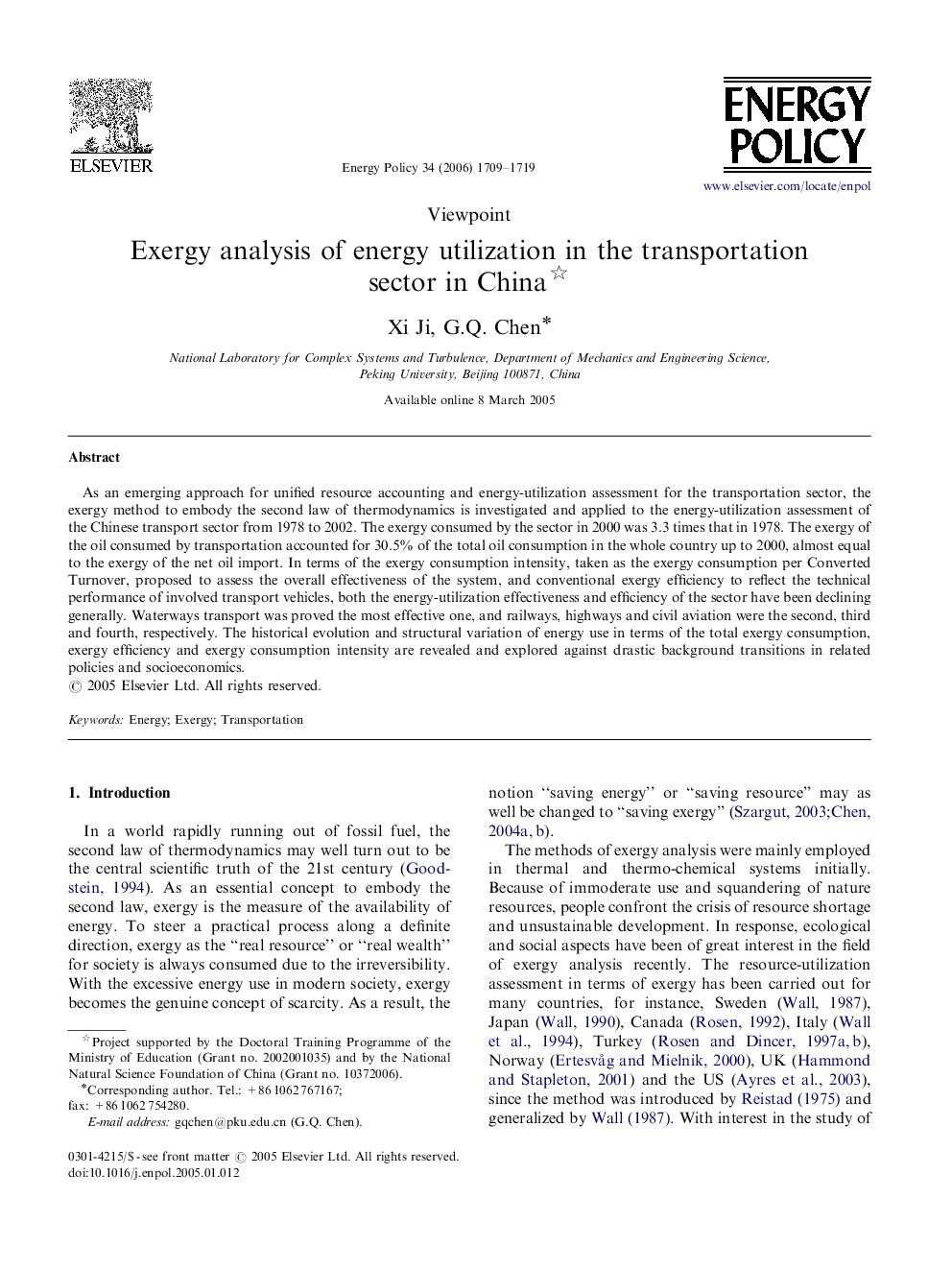| Article ID | Journal | Published Year | Pages | File Type |
|---|---|---|---|---|
| 994737 | Energy Policy | 2006 | 11 Pages |
As an emerging approach for unified resource accounting and energy-utilization assessment for the transportation sector, the exergy method to embody the second law of thermodynamics is investigated and applied to the energy-utilization assessment of the Chinese transport sector from 1978 to 2002. The exergy consumed by the sector in 2000 was 3.3 times that in 1978. The exergy of the oil consumed by transportation accounted for 30.5% of the total oil consumption in the whole country up to 2000, almost equal to the exergy of the net oil import. In terms of the exergy consumption intensity, taken as the exergy consumption per Converted Turnover, proposed to assess the overall effectiveness of the system, and conventional exergy efficiency to reflect the technical performance of involved transport vehicles, both the energy-utilization effectiveness and efficiency of the sector have been declining generally. Waterways transport was proved the most effective one, and railways, highways and civil aviation were the second, third and fourth, respectively. The historical evolution and structural variation of energy use in terms of the total exergy consumption, exergy efficiency and exergy consumption intensity are revealed and explored against drastic background transitions in related policies and socioeconomics.
